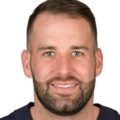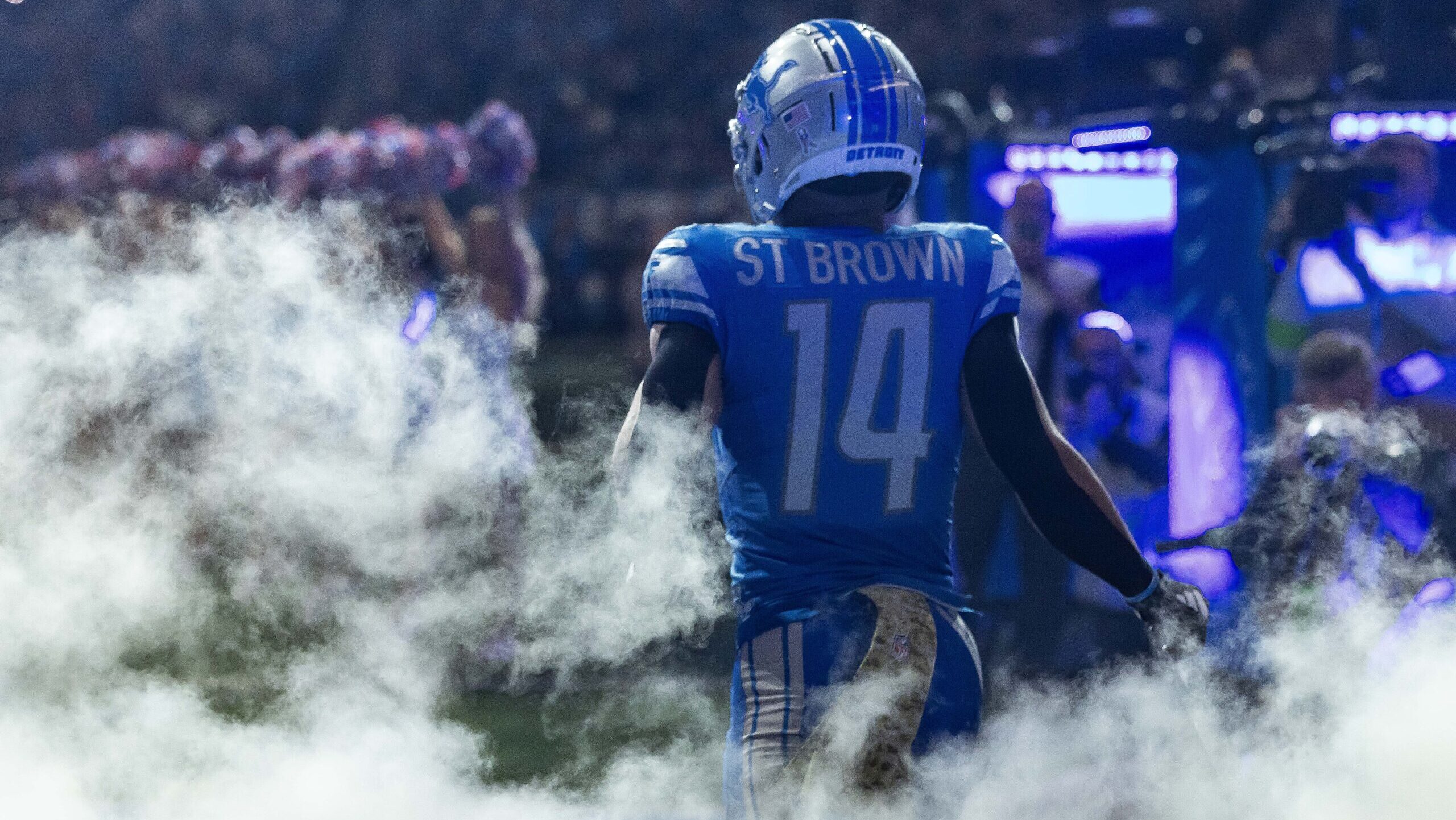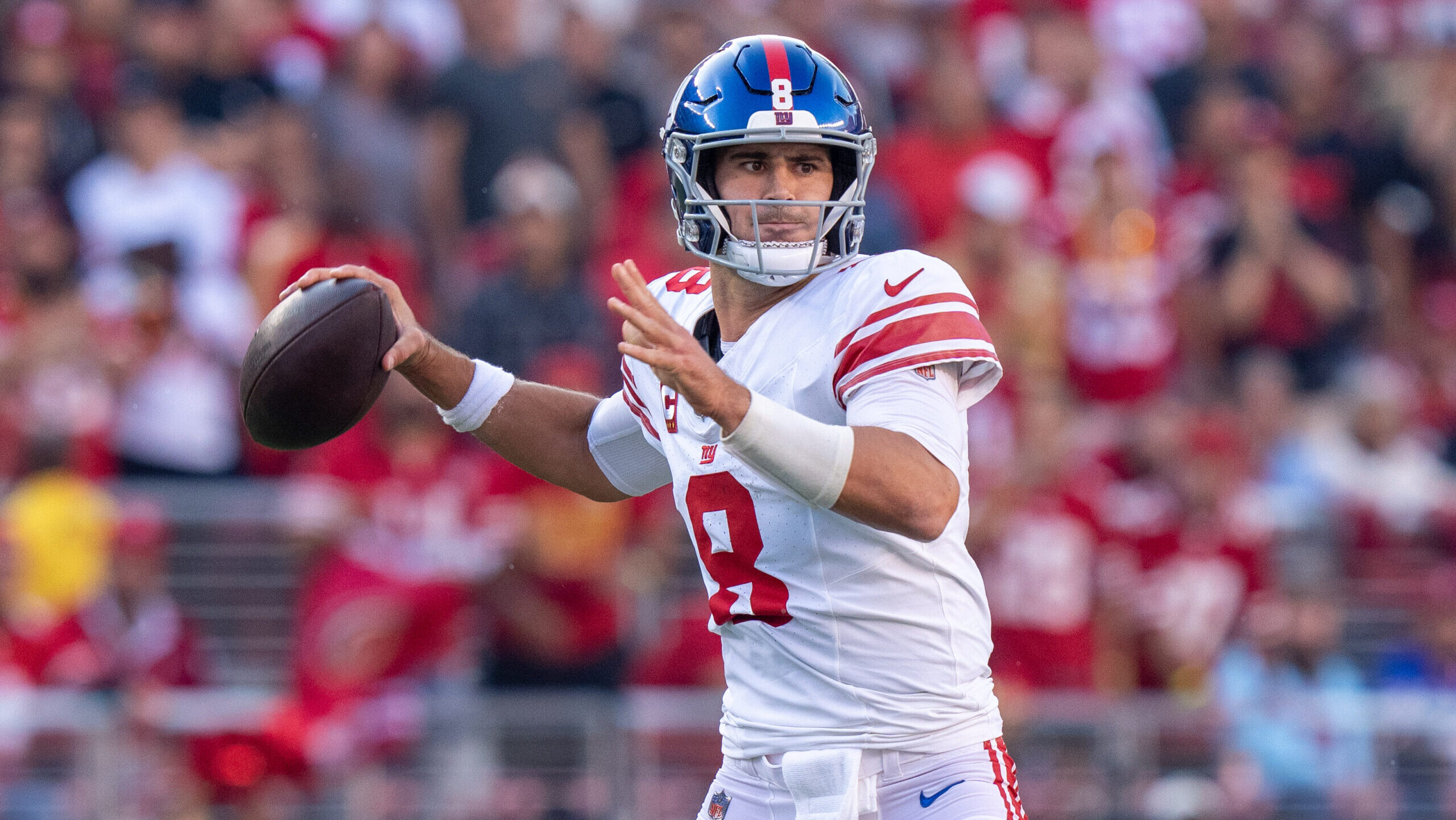Analysis
10/31/23
6 min read
Jahmyr Gibbs' Breakout Makes Detroit Lions Legit NFC Contenders
Monday night was always going to be a "get right" game for the Detroit Lions. They needed it after getting torn to shreds by a surging Baltimore Ravens team last week.
Thankfully for the boys in Honolulu blue, hosting the Las Vegas Raiders with an extra day of rest presented the perfect opportunity to get back in the saddle. They did just that. The Lions handled business after letting things stay close for three quarters, beating the Raiders 26-14.
The Lions got more than they bargained for, though. It wasn't just a "get right" game.
It was the Jahmyr Gibbs Game.
Gibbs' MNF Breakout
For the first time all year, Gibbs looked like the player Detroit drafted 12th overall. He looked like a player who could blossom into a star.
Gibbs shouldered a heavy load for the Lions run game on Monday night. It was the first time he's had to do that. Gibbs has started two other games this season with David Montgomery out of the lineup.
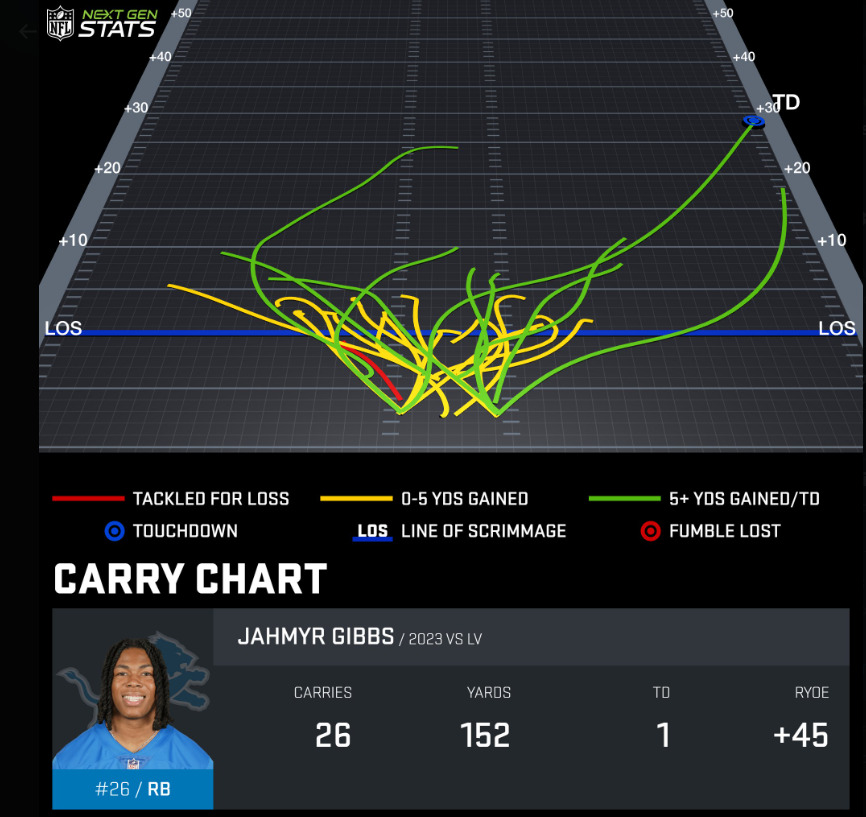
However, Monday night was the first time Gibbs took at least 20 carries like a true bell cow back. Gibbs answered the call and cruised to 152 yards and a touchdown on 26 carries.
In terms of efficiency, Gibbs got the job done. He finished the night with a 38.5 percent success rate. That's slightly better than his 36 percent success rate on the season and right in line with the league average of 37.9 percent. That's not out of this world, but it's good enough to set the foundation for a run game.
With the foundation set, Gibbs unleashed all of his explosive potential. That's been his calling card along. Gibbs ran a 4.36 40-yard dash at the NFL Combine, and you see that speed every time he gets into open grass.
In this game alone, Gibbs ripped off four different 10-plus yard runs, the most of any Lions running back in a game this season.
JAHMYR GIBBS BREAKOUT GAME 🔥
📺: #LVvsDET on ESPN/ABC
📱: Stream on #NFLPlus https://t.co/3b1HZU34bs pic.twitter.com/Tk53pg167Z— NFL (@NFL) October 31, 2023
Gibbs' pièce de résistance was the 27-yard touchdown run. He wiggled through a hole at the line of scrimmage, made one cut to the right, and instantly went 0-60 to beat the Raiders’ defense to the pylon.
That cut and that burst of acceleration was precisely what the Lions saw littered all over Gibbs' college film. It's the type of rare movement skills that get a running back drafted in the top half of the first round when running backs are increasingly getting shoved down draft boards.
It's not just the explosive plays that made this feel like Gibbs’ breakout moment, though. We knew he could rip off some explosives when given the chance. That was apparent even in limited action in the opener against the Chiefs.
The marriage of volume, efficiency and explosiveness made this game feel like Gibbs finally came into his own. In the seven games before this, Gibbs had yet to strike the balance with all three.
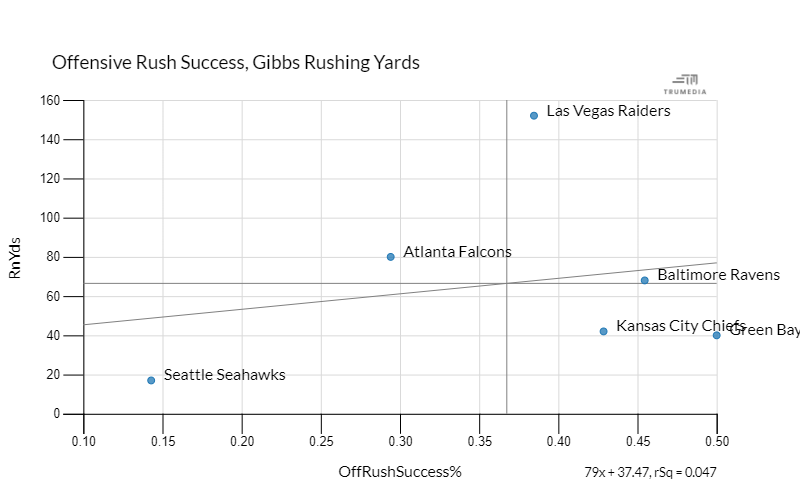
Gibbs had some efficient games without explosives, like the Green Bay game in Week 4. And he had some explosive games that weren't consistent down to down. The Week 3 Falcons game comes to mind.
Gibbs flashed some efficiency and explosiveness simultaneously versus the Chiefs in Week 1, but that was on seven carries. There was always some part of the equation for a star player missing, even if you could see the bits and pieces coming together week after week.
Monday night was the total package.
What Took So Long?
So where was this version of Gibbs before, and why were the Lions hesitant to unleash him?
Sometimes, these things just take time. Gibbs wasn't the cleanest runner coming out of Alabama. He's not blind the same way Trent Richardson was, don't get me wrong. Still, he had some of the same tendencies to bounce everything and anything the way Tony Pollard does in Dallas, for example.
The bet was all of Gibbs' explosive potential would outweigh the inconsistency, or they could rein him in enough to turn him into a weapon.
There's also a truth fantasy managers don't want to hear: Montgomery is a good player, too. Part of the "reluctance" to play Gibbs isn't an indictment on Gibbs. It's just that the Lions paid Montgomery, and he's a good, steady running back.
For one, Montgomery had been more efficient than Gibbs until this game. Heading into Week 8, Montgomery had a 39.4 percent success rate. That's not only better than Gibbs but good for 14th in the league among players with at least 50 carries.
Montgomery kept the offense moving, a valuable skill in a play-action-laden offense like Detroit's. The threat of the run and being in favorable down-and-distances is huge.
The Lions also trust Montgomery far more as a pass protector, for good reason. Montgomery had allowed just two pressures on 25 pass protection snaps, per TruMedia. Gibbs, by contrast, has allowed three pressures on only 12 pass protection snaps.
It's boring to care about something like that for a position about making plays with the ball in your hands, but that stuff matters to coaches. Earning playing time is all about earning trust, and a player has to do their job to earn that trust — every part of the job.
Gibbs' Future Role
None of that is to say the Lions should surrender a ton of snaps back to Montgomery when he returns — quite the opposite.
What this performance says is Gibbs can handle the lead rushing role. Gibbs has proven he can be efficient and explosive at the same time and do it over a ton of carries. He can be the guy who takes 65 percent of the snaps and overwhelms defenses with explosive plays, while Montgomery fills in as a stabilizer rather than vice versa.
If that's the case, this Lions offense will find another gear. The Lions were already one of the best offenses in the league without many explosive plays from the backfield.
Getting more touches out of an explosive play slot machine like Gibbs might be all the Lions need to tip over into real contender territory in the NFC.
Derrik Klassen is an NFL and NFL Draft film analyst with a particular interest in quarterbacks. Klassen’s work is also featured on Bleacher Report and Reception Perception. You can follow him on Twitter (X) at @QBKlass.



